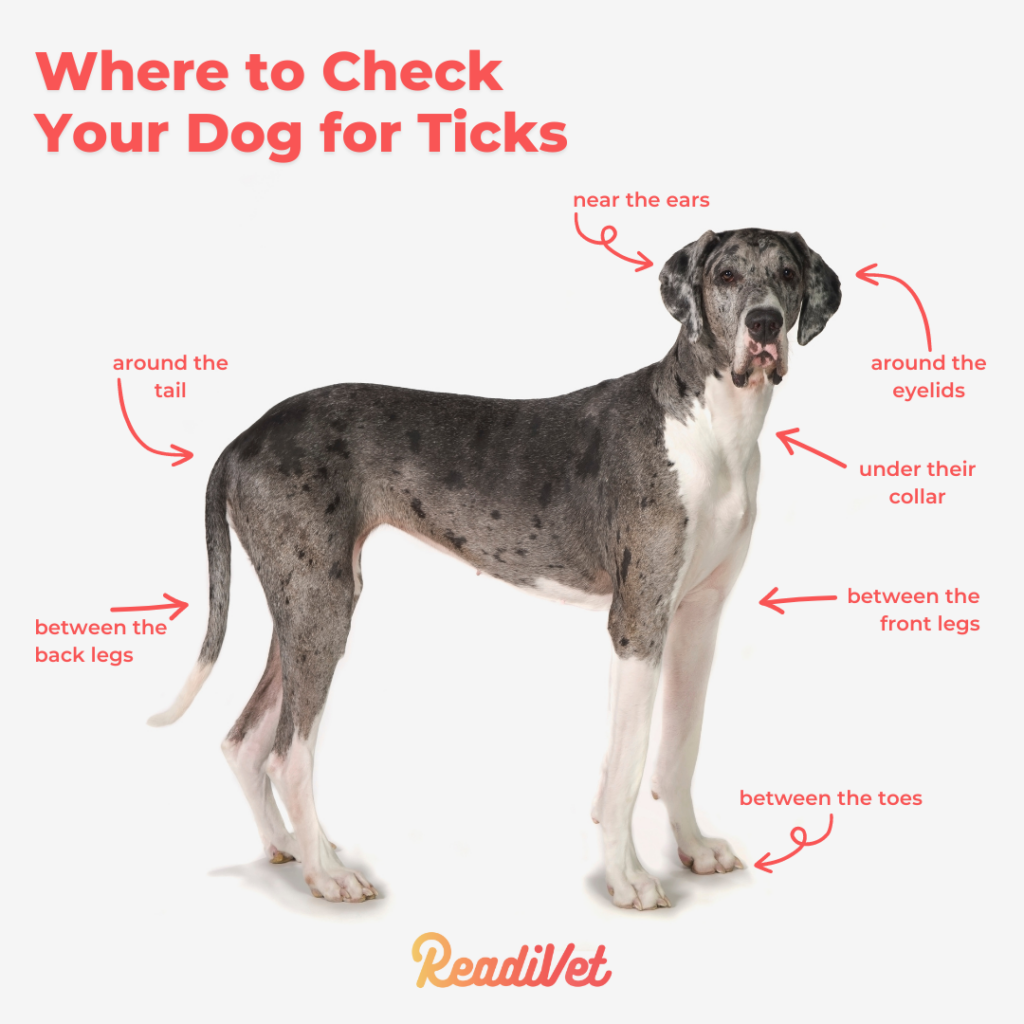As a pet parent, it’s critical to protect your pets and yourself from diseases that spawn from ticks and other parasites. Ticks transmit numerous illnesses and conditions in animals, the most notorious of which is Lyme disease.
Though not the most appealing subject, it’s essential you know how to safeguard your pet against Lyme disease. Read on to learn more about Lyme disease, what it is, the symptoms of Lyme disease and how to protect your dog.
What is Lyme disease?
Lyme disease is a bacterial infection caused by the bacteria Borrelia burgdorferi. These bacteria are transmitted through the bite of an infected black-legged tick, also known as deer ticks.
These ticks can be found in forests and grassy, wooded or marsh areas all over the United States. People or animals can be bitten during outdoor activities like hiking, camping or even spending time in their own backyards. Ticks are most active from early spring through the fall, meaning the chance of an infection is highest during this period.
Can my cat get Lyme disease?
Lucky for cat owners, Lyme disease is less of a concern. Although the bacteria that causes Lyme disease is capable of infecting cats, it’s especially rare and cats are highly resistant to an infection.
What are the symptoms of Lyme disease?
Lyme disease can manifest in various ways and be difficult to diagnose. Most dogs infected with Lyme disease will appear healthy, with no signs at all. However, in dogs that do become ill, signs of Lyme disease will show up 2-5 months after dogs are first infected. The illness can take many forms, but the most common symptoms of Lyme disease in dogs are:
- A “bulls-eye” skin rash
- Intermittent limping or lameness that shifts from leg to leg
- Fever
- Loss of appetite
- Decreased activity
- Swollen lymph nodes
- Painful, swollen joints
Some dogs with Lyme disease (about 1% to 5% of infected dogs) also may develop a type of kidney disease called Lyme nephritis, which can lead to edema, weight loss, vomiting, diarrhea and sometimes death.
How is Lyme diagnosed and treated?
Other tickborne illnesses can mimic Lyme disease, and because most dogs do not show symptoms when first infected, diagnosing Lyme disease can be tricky. Thankfully, blood tests that measure antibodies can help diagnose or rule out Lyme disease.
After reviewing blood test results and your dog’s condition, the standard treatment plan for dogs sick from Lyme disease includes a course of antibiotics and a series of follow-up visits and blood tests to ensure the effectiveness of treatment.
A longer course of antibiotics or anti-inflammatory medication may be necessary for some dogs, such as those with Lyme nephritis. Long-term effects of Lyme disease in dogs can include arthritis and heart and kidney damage. Fortunately, most dogs recover well from Lyme disease.
How can I protect my dog from Lyme disease?
Other than routine body checks for ticks, your pet’s best defense against ticks is prevention. This includes:
- A year-round tick preventative to repel and kill ticks, prescribed by your veterinarian.
- Regularly inspect your pets for ticks, especially after outdoor activities. Promptly remove any if found.
- If your is an avid outdoor adventurer, consult your veterinarian about a canine Lyme disease vaccination to provide additional protection.

There are multiple year-round flea and tick preventive medicines available through prescription. You can consult your trusted vet to see what preventive treatment is the right fit for your pet.
If you own multiple pets and use preventative treatments, we recommend to treat them all at the same time. It’ll help keep you track their dosages and prevent cross-contamination. Most pet parents we see give all their preventatives on the first of the month.
Awareness and proactive prevention is always the best way to protect your pets. By understanding what is Lyme disease, the cause and the symptoms of Lyme disease – pet parents can keep their dogs happy, healthy and tick-free.




